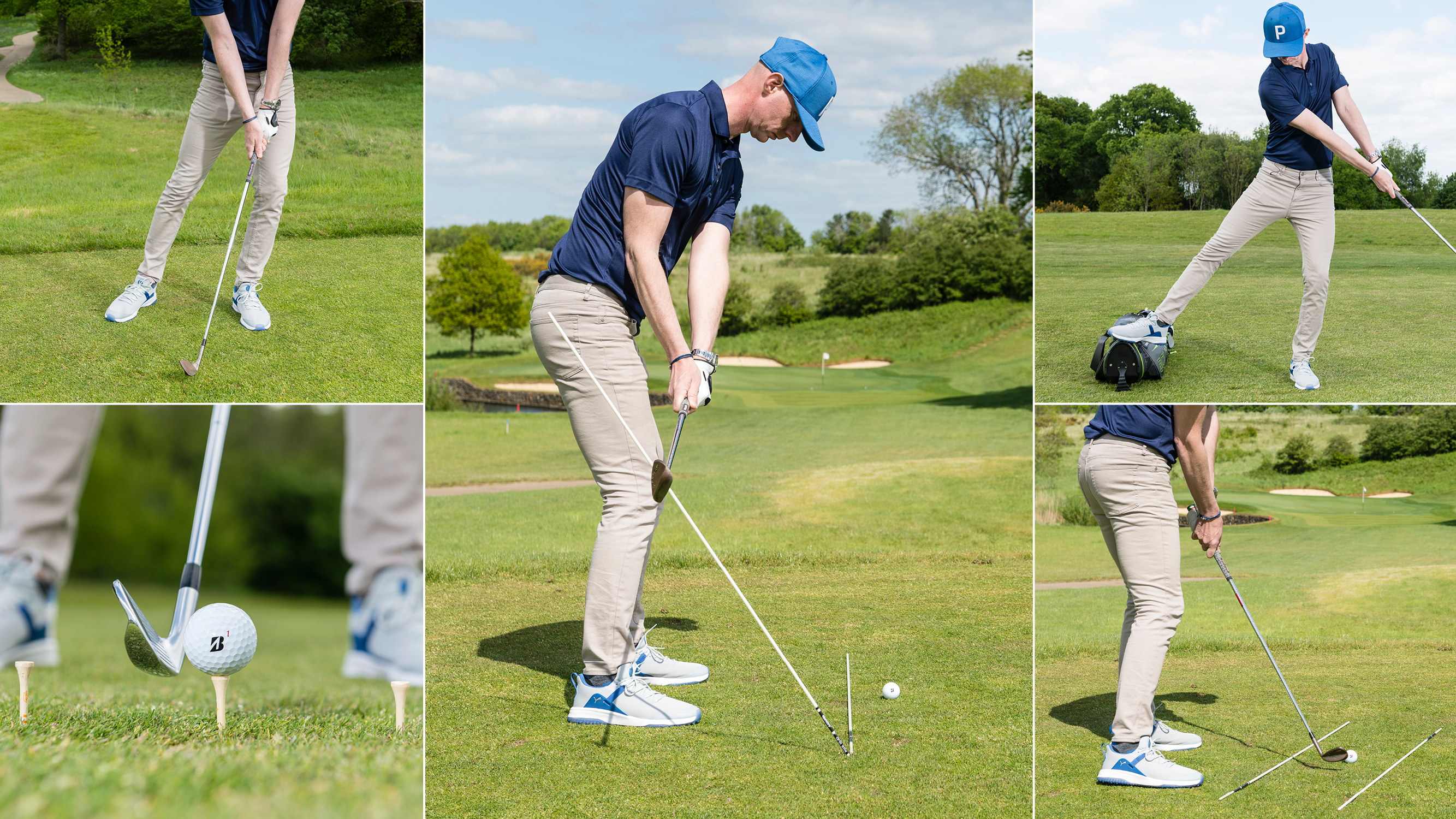
For many amateurs, improving their ball striking is high on the priority list, but without the right tips and drills, this can be tricky to achieve.
With lots of factors contributing to better ball striking, including the fundamentals of finding the perfect grip and ball position, we decided to seek the advice of an expert.
In this video and article, Golf Monthly Top 50 Coach Ged Walters shares his 5 best ball striking drills in order to help you shoot lower scores and play better on the course...
1. Bag Drill
This is a great drill for golfers who struggle with fat and thin strikes, usually because the player hangs back through impact. Start by laying your golf bag on the ground, and resting your trail foot on top of it.
You will need to flex your lead knee more than usual because it's taking all of your bodyweight, but will help you to get used to the feeling of having pressure forward through impact. Start by taking some half swings, and aim to hit the ball before the ground using a downward angle of attack. You may struggle to hit the ground first in your initial attempts, but stick with it and you will notice the benefits for your ball striking.
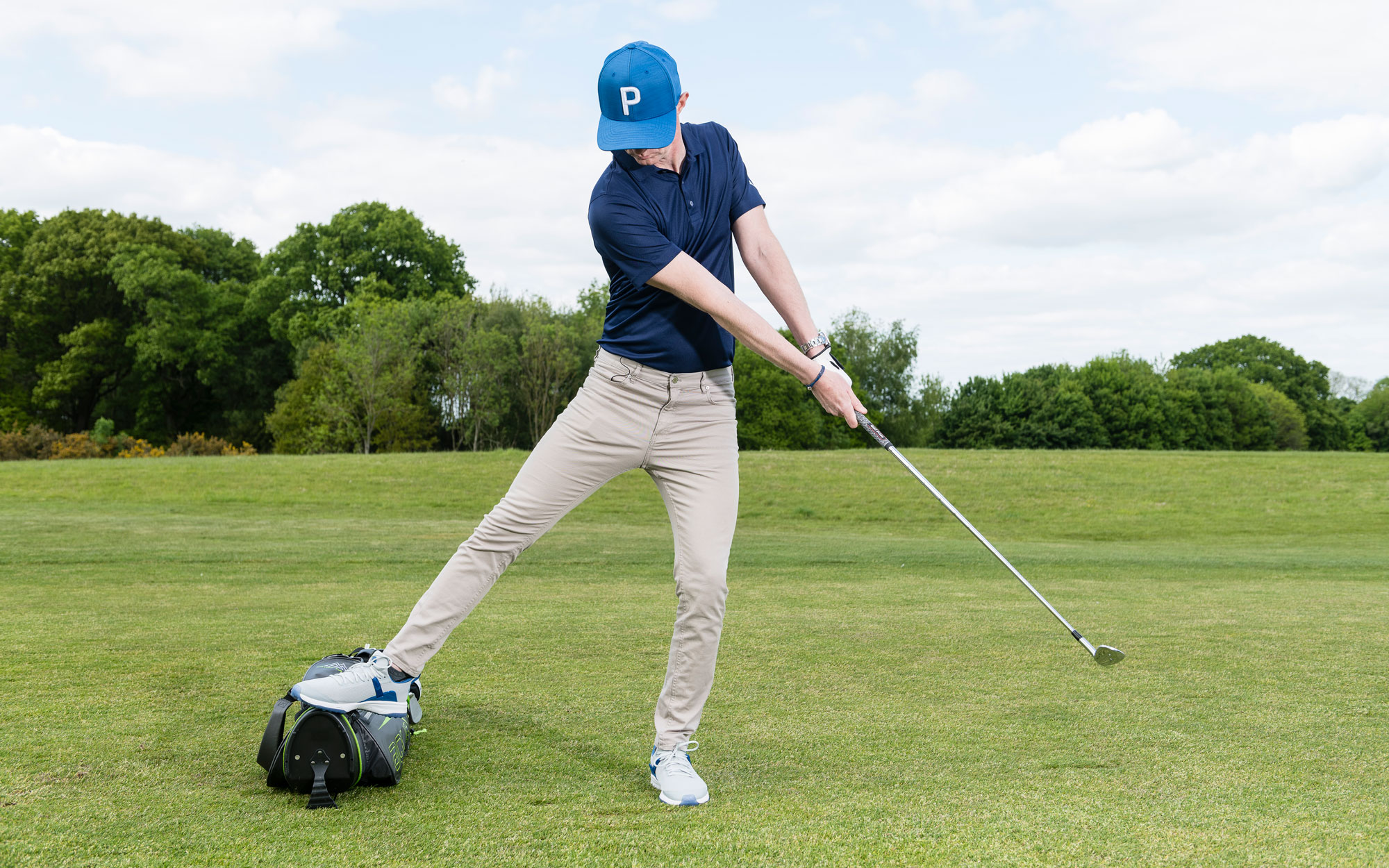
2. Line Drill
This drill allows you to rehearse the correct positions to execute the perfect strike. Use a tee to etch a line into the ground. Carry out some practice swings and pay attention to where the club meets the turf. You want to make sure that the clubhead brushes through the line.
You will receive instant feedback from this drill, which is what makes it so great. If you hit behind the line, it's likely that you have swayed back with your weight transfer, but by keeping your pressure moving forwards you'll hit the ground in front of the line.
You want to see the divot start around an inch after the line, so keep trying until you achieve that perfect strike.
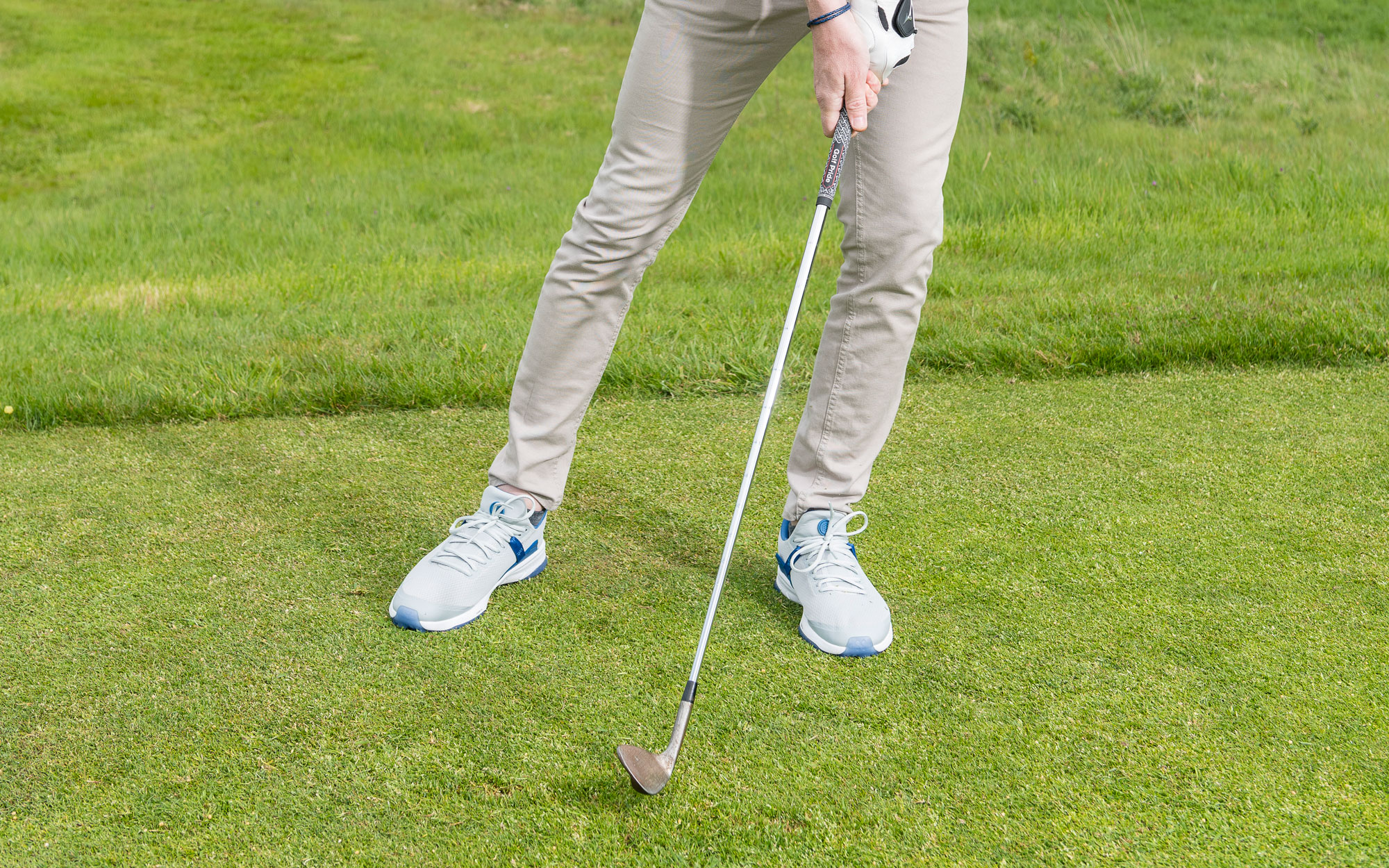
3. Hit And Stop Drill
What I love about this drill is that it helps the body to organise itself a little bit more naturally. Take out a 9-iron, and set up with a touch more pressure into your lead foot. Keep the pressure there and make a nice controlled swing. The really crucial part is to stop as quickly as you can beyond impact. Start with half swings and make a comfortable speed swing before cranking it up.
You’ll start to appreciate how your weight moves forward, how your pelvis tucks underneath your torso, and the extension through the legs, pelvis and spine; it really helps you to understand how the body should move during the golf swing.
4. Swing Plane Drill
This is worth trying if you’re someone who’s looking to rein in a big draw or fade. All great ball strikers have a fairly neutral swing direction – so nothing excessive, such as ten degrees right or left, which is what I’ll often see with amateurs. If you’re someone who tends to slice, you’re most likely cutting across the ball.
Practice the opposite – so turn the sticks out to the right (approximately 40 degrees). Vice versa, if you tend to hook the ball – turn the sticks to the left to encourage a feeling as though you were coming across the ball a little more. The picture you should have in your head is to swing the club down between the sticks.
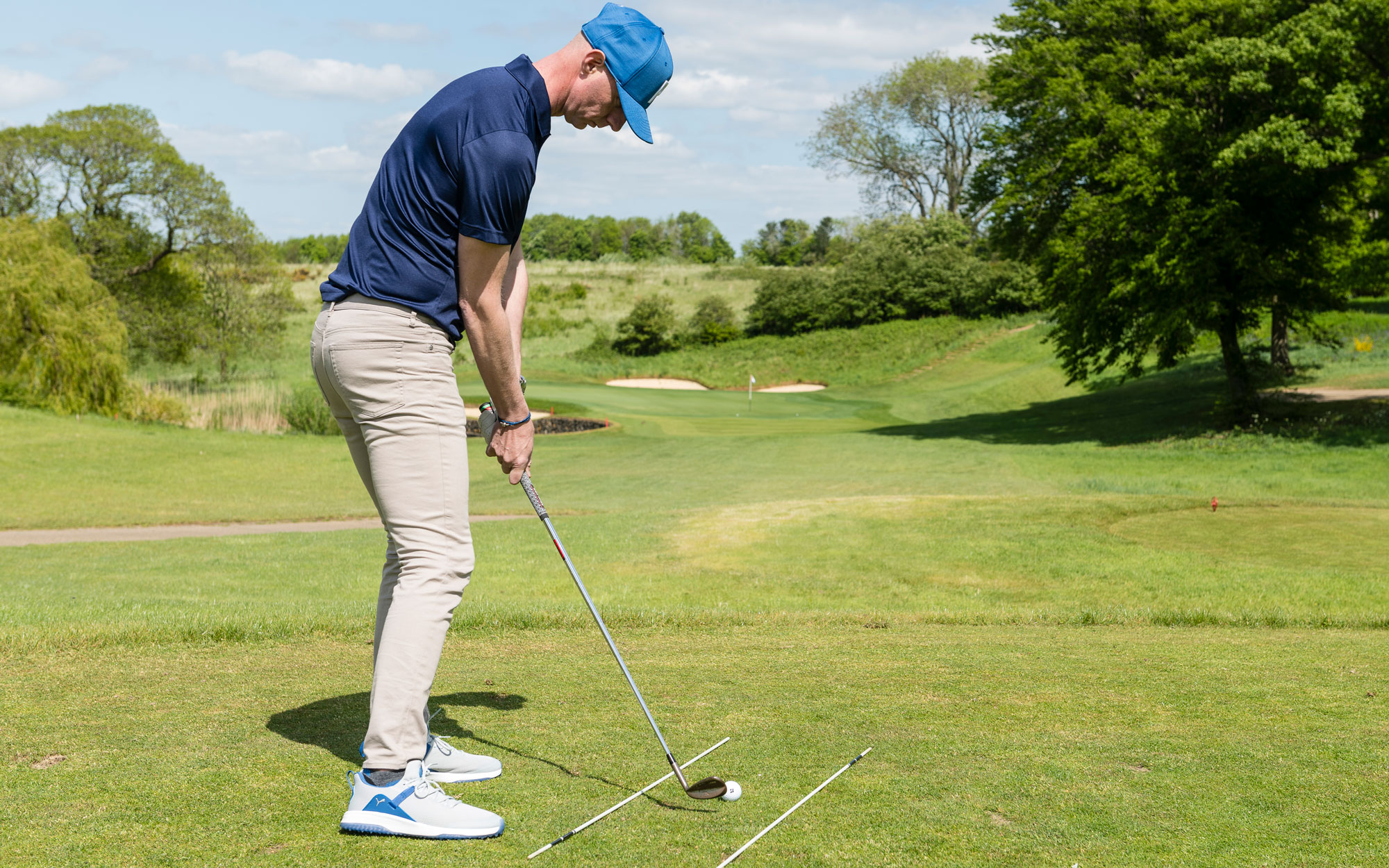
5. Tee Peg Drill
This drill is all about controlling the low point in the arc of your swing. Start by teeing up a ball, and then try to clip it away cleanly. Once you've successfully done this, put another tee about a clubhead’s width behind at the same height. Your objective is to miss the rear tee and clip the ball cleanly off the other one. For the final part of the drill, put a third tee a clubhead’s width in front at the same height. Now the aim is to miss the rear tee, clip the ball off the middle one, and hit the front tee - the video with this article shows exactly how it's done.
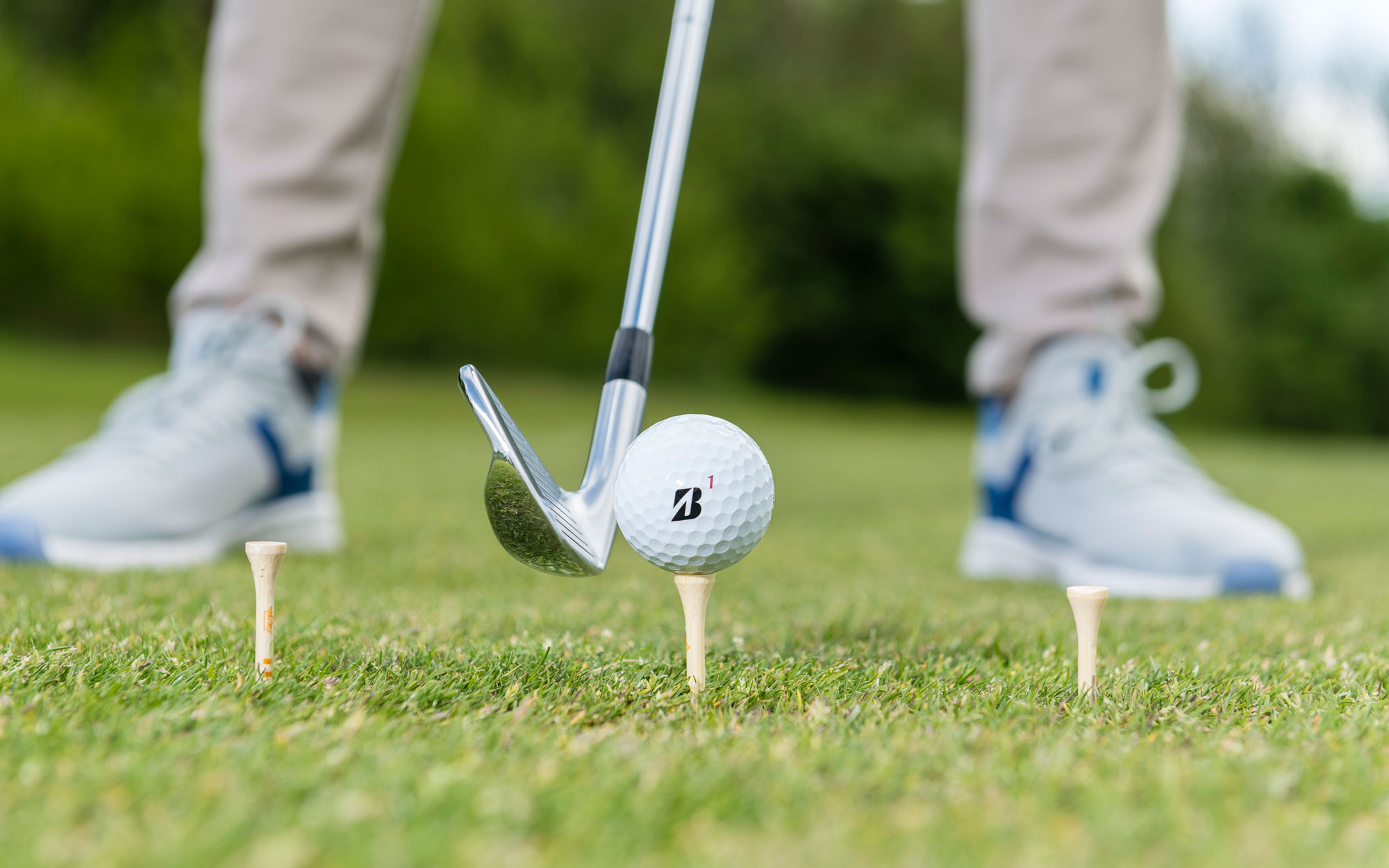
This drill encourages a downward angle of attack and gets your body moving in the right direction. This drill also helps you to adjust to different lies on the course, which we don’t tend to come across on mats at the range.







